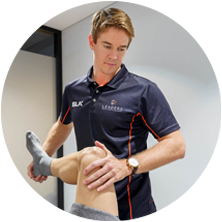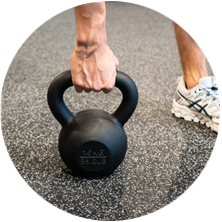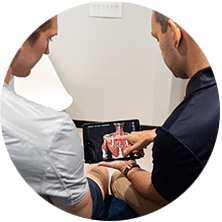
Thoracic Spine
The anatomy of the thoracic spine differs from the cervical and lumbar spine in the addition of the ribcage. There is a rib attached to each side of the thoracic spine, in multiple locations – the head of the rib articulates with not only its corresponding vertebra, but also the superior portion of the rib head also articulates with the inferior aspect of the vertebra above.
Your costo-vertebral joints can be a common source of pain in the thoracic spine, as there is a mirriad of connective tissue, and mobile joints in a small space. An injury to a costo-vertebral joint is commonly referred to as a costo-vertebral joint dysfunction, this is due to the injury occurring through a complicated combination of movements.




